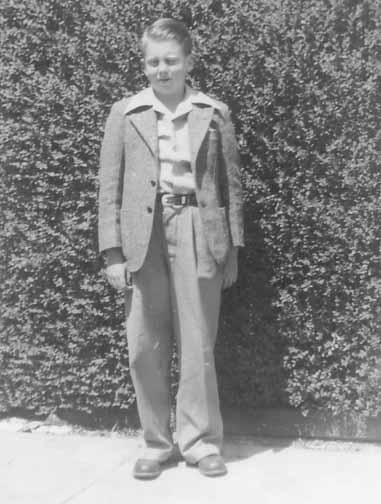
Totoaba Guy of San Felipe
![]()
|
Chuck McReynolds on his eleventh birthday, 1945, about two months before his commercial totoaba trip to San Felipe. |
A FIRST-PERSON ACCOUNT OF THE AMERICAN COMMERCIAL
TOTOABA FISHERY AT SAN FELIPE, MEXICO
By Gene Kira, May 17, 2004, as orginally published in Western Outdoor News:
Chuck McReynolds of Pasadena has a rare personal story to tell about how American market fishermen were involved in the early harvest of the now endangered totoaba, Cynoscion macdonaldi, around San Felipe, Baja California, Mexico, at the north end of the Sea of Cortez.
Chuck is the only American I’ve ever been in personal contact with who actually fished commercially for this gigantic croaker and brought them back to the U.S. for sale. Although he made only one such commercial fishing trip--in 1945, as a boy of eleven helping his father--Chuck’s experience is probably unique among Americans still living today, and it needs to be told.
|
|
In the spring of 1942, he went on his first trip to San Felipe with his father, to deliver dairy products to a U.S. Army radar base near the old ice plant on the hill at the north end of town.
(This was five years before Ray Cannon’s first visit to the area.)
Three years later, he made his first and only commercial totoaba fishing run to “San Flippy,” in October or November of 1945, with his father and a group of friends.
(Still two years before Ray Cannon!)
Chuck’s boyhood recollections of that second, totoaba fishing, trip are historically significant in providing us with actual, first-person insight into exactly how this marlin-sized relative of the white seabass was almost exterminated by the 1960s, and what role we Americans played in that process.
His personal description of the economic conditions that powered the totoaba fishery during and after World War II, of crossing the border and driving down the early San Felipe “radar road,” and of catching totoaba right in the bay and taking them home for sale in the U.S., are the only ones I’ve ever come across. This is precious stuff, amigos.
Here then, in this column and two more to follow, is Chuck McReynold’s record of what a commercial fishing trip to San Felipe was like in those early days of Baja’s modern history, just as the totoaba was becoming an endangered species:
AMERICAN TOTOABA MARKET:
|
|
“The reason to go catch totoaba was to bring 'em back and sell 'em to restaurants--to make a quick, fun buck.
“Anybody who owned a boat and who lived anywhere in Southern California would go to ‘San Flippy.’ For some reason, the ‘industry’ was centered in San Bernardino.
“You'd launch the boat, and fish right in ‘San Flippy’ bay, using nets, and fill up your trailer in one afternoon, often making a thousand or more dollars for a weekend’s work, at 60 cents a pound, as I recall.
“We dragged out nets behind the boat, and pulled 'em in, and did this until it was felt we had all we could keep, based on the ice we had brought. We sold them to a wholesale fish house in San Bernardino, and my dad's share, after expenses, was about $500.
“My dad ran the Challenge Dairy branch in San Bernardino when World War II started. By March of 1942, most of the men--truck route driver-loaders--had quit and joined the military. By working 18-hour days and hiring and training ‘older’ men, my dad kept things running. When necessary, he'd drive a route himself.
“Wages were established by the government during the war, and my dad's salary was $400 a month. A month was comprised officially of ten hours a day, Monday through Friday, eight hours on Saturday, and Sundays off. No overtime, no matter how much longer one worked. By comparison, the $500 for the weekend was pretty good, and a lot of people were doing it.”
CONTINUED: “San Felipe Milk Run,” Chuck McReynold’s first drive across the border and down the San Felipe “radar road,” in 1942.
(Related San Felipe articles and reports may be found at Mexfish.com's main San Felipe information page. See weekly fishing news, photos, and reports from the major sportfishing vacation areas of Mexico including the San Felipe area in "Mexico Fishing News.")
MEXICO FISHING INFO SAN FELIPE FISHING INFO "WEEKLY MEXICO FISHING NEWS" FISH PHOTO GALLERY
